Earlier this year, Samsung in the United States CES officially released this year's TV new QLED light quality sub-dot TV, in the quality of the highest brightness can reach 1500 ~ 2000nit, this brightness is 6 times that of ordinary TV. At the same time, QLED TV is the world’s first TV capable of restoring 100% NTSC color volume.

After domestic listing in March, with the same 65-inch Q8C and Q7C, the appearance of functions are similar, the price is similar, quite a double rabbit mean to go. Last week, Sina Digital has brought Q8C evaluations to everyone. Today, let's talk about what the difference between Q7C and the former is.
Exterior
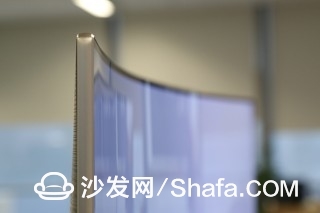
In terms of appearance, the Q7C is similar to the Q8C and uses a 4K screen with **0R curvature.
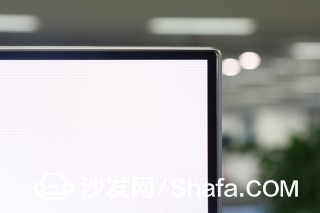
This TV also uses a silver metal middle frame, ultra-narrow frame design. At the same time, the sleek design of the corners is still used to prevent damage to the furniture and the body.

Below the front is the Samsung Logo. Unlike the Q8C, there is no white backlight. The red light under the logo is retained to show the current status of the TV.
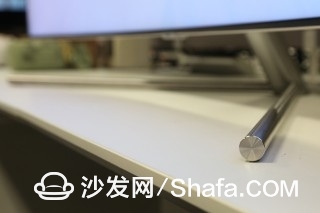
The first obvious difference from the Q8C is the TV base. Although this product still uses a bracket that gives a “floating†visual effect, it replaces the curved stand that echoes the curved screen with a Y shape. However, the metal material was retained.

The back shell is the second difference point of Q7C. This product will replace the silver metal brushed back shell with the black plastic texture back shell. The plastic texture is even worse than that. The increase of the surface area of ​​the rear shell also disguisedly enhances the TV's heat radiation. In addition, the design of hidden screws and traces has also been preserved.
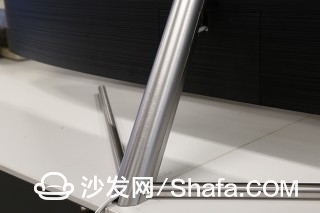
In fact, the rear bracket uses a plastic removable housing that is brushed with a metallic paint that is visually consistent with the chassis but is removable.

At the same time, the TV has also designed a plastic cover for the interface and the bracket installation to improve product integrity.

Q7C continues the design of the host interface and TV split, in addition to convenient connection and U disk pull out, can also solve the TV wall when the use of the wiring confusion. In the interface, there are three USB, network ports, optical audio output, four HDMI, cable TV interface. On the right is the One Connect and the power supply connected to the TV. The product placed the AV connector and 3.5mm audio output on the side of the box.
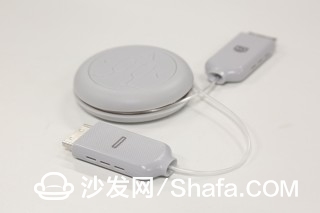
The One Connect line is still a transparent, ultra-thin design, and even wall-mounted ones do not leave too noticeable traces on the walls.

Like the Q8C, the remote control uses a metal design echoing the TV. The buttons have been rearranged and are more mature than previous generations of products. Simplicity does not affect the convenience of use. For example, the volume adjustment and channel switching buttons are designed to be pushed up and down, giving one button three operation modes. A battery lock is also designed on the back of the remote control. After the button is pressed, the remote control can slide down to install the battery. The details are in place.
Quality
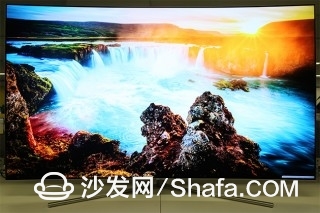
In terms of picture quality, Cadmium-free quantum dot technology, localized light control technology, sophisticated black control technology, deep black anti-reflection panel, and Q image engine have all been retained. The only difference is that the Q8C's motion processing rate can reach 200, while the official Did not disclose Q7C motion compensation rate.
Motion compensation technology has a significant fluency improvement effect on high-speed motion pictures. We all know that the playback of a video is a quick switch from one continuous image to another. Each image is called a frame. When the objects in the picture are running slowly, the distance between the objects moved between frames is small, and after the eyeballs are used, they do not feel incoherent.
However, when the object suddenly starts to move at a high speed, the distance the object moves from one frame to another becomes large, which gives the eyeball an incoherent feeling. The role played by motion compensation is to automatically calculate the trajectory of the motion of an object in two adjacent frames and generate a picture. In the same period of time, the insertion of the two-frame picture plays so that the visual experience and video fluency of the user are enhanced.
After watching action movies and football highlights on this TV, the impression is that there is a certain gap between video coherence and the Q8C, but there is no problem of shadowing when moving at high speed. Fluency is higher than mainstream products in the market.
The following is still the standard quality test. The first is to use Starscream to measure the screen color gamut.
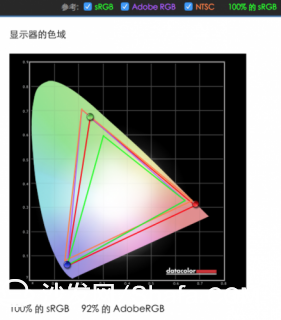
The above figure shows that the screen color gamut can reach 100% sRGB, 92% AdobeRGB, and even exceed the sRGB, AdobeRGB, and NTSC gamut in the blue and red parts.

In the objective test, the sharpness exceeds the 4K screen standard, and characters, points, and lines can be clearly displayed.
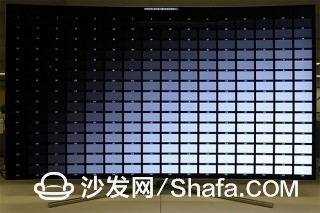
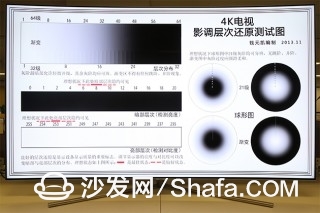
In terms of gray-scale contrast, the shadow layer test chart can reach 6 black and white can reach 254, all exceeding the standard, consistent with the Q8C level.


In terms of color reproduction, it can be seen that there is a slight deviation between yellow and green, and other colors are accurately reproduced and the transition between the right swatches is smooth.
This is followed by color transitions, contrast, shadow detail tests.

The first sunset, you can see the natural smoothness of the sky, and there will be no problem with faults.

The second fruit is brightly colored with a clear contrast between red and green. The grey background is pure.

In the third starry sky, the dark part and the bright part are clearly contrasted and the details are clear.

Using HDR video for testing, the highlights of the picture are particularly clear. The same video was played on a regular computer monitor, and the basic bright areas were overexposed.

In 4K decoding, it is still fully compatible and drag-free.

Finally, the audio aspect is the final difference between the Q7C and the Q8C. See the original built-in 60W component speaker replaced with 42W, but in normal use, there is no significant difference with the Q8C.
system
Whether it is function or fluency and stability, Tizen on the Q7C is no different from the flagship product. It is still a small, clean, low-bar design that cancels the main interface, and can be cut out at any time even while watching a video, without affecting the viewing of the content.
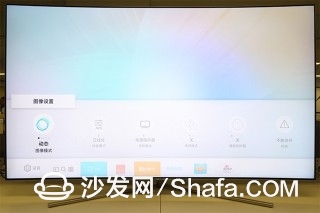
The leftmost is a quick setting, including the ability to adjust the picture quality and sound quality in real time, and switch the speaker, time off, and WiFi quick connection. Click on to get more shortcuts.
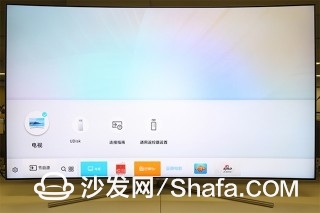
The program source includes all external signals and can automatically switch between wired signals, HDMI, and an external USB flash drive or removable hard disk.
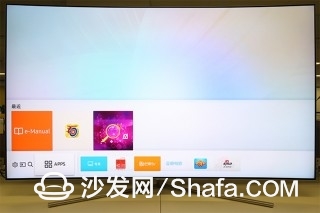
In the application interface, the most frequently used and frequently used applications will be displayed. After clicking on it, the number of applications will increase significantly compared to before. In addition to commonly used video apps and games, Suning’s e-shopping applications It is already online.

In cable TV, the system has its own recording function to facilitate the user's playback and sharing, and also eliminates the need for recorders and other equipment. This feature is not currently available in most TV products.

The app bar on the right shows some of the content in the app. For example, by placing the cursor on the video app, the latest popular recommendation content can be displayed so that the user can directly play on demand without opening the application.
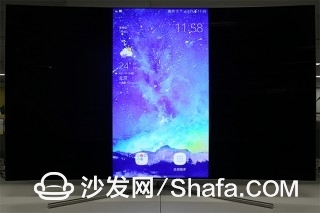
The linkage between the Tizen system and the Samsung mobile phone has also been retained, including three main functions: 1. The mobile phone acts as a TV remote control. 2. The mobile phone screen can be directly mirrored and projected onto the TV screen. 3, TV content can also be backprojected onto the phone screen.
to sum up
Q7C continued Samsung's high level of industrial design. Although the base has been changed and the back cover has been changed to black plastic, it has reached a high level in aesthetics, texture and workmanship.
In terms of picture quality, thanks to the combination of enhanced backlight intensity, localized light control, and sophisticated black control technology brought by quantum dot technology, product image quality can reach HDR level. At the same time, color gamut coverage and color accuracy are at the flagship level.
Although the system is simple, it is rich in functionality. The addition of kiwifruit and mango TV also complements the short content.
As for motion compensation technology, in addition to fans who have extremely high demands on picture quality, this product can also meet the needs of most users, and even the display effect can exceed your expectations.